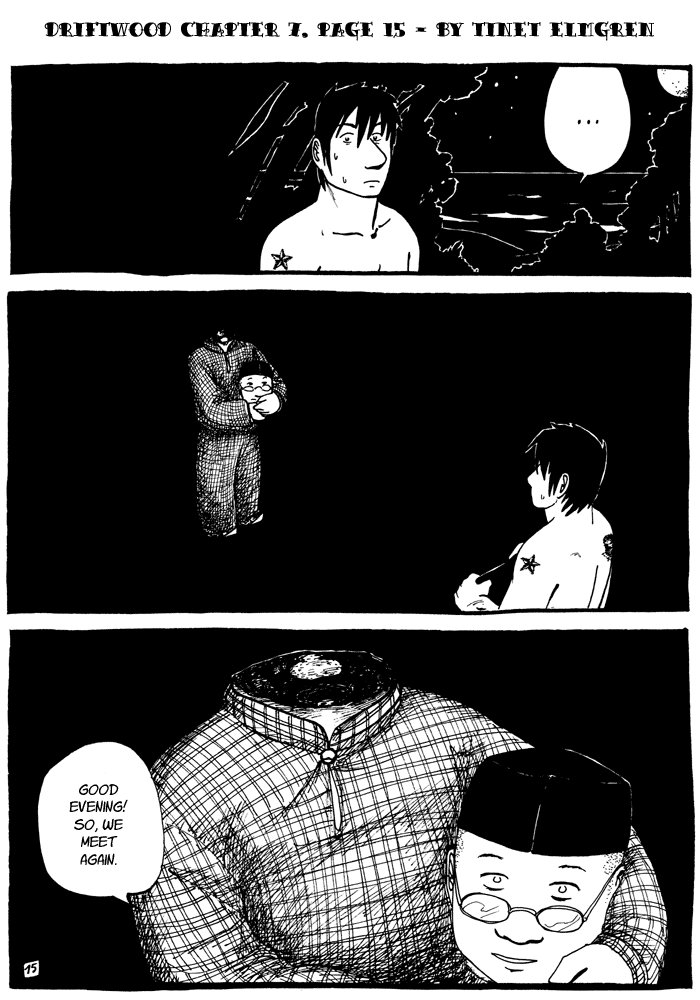The original Swedish title of my comic Driftwood is Drivgods, which means ‘flotsam’ (not only wood, but all kinds of stuff that float around in the sea).
Back in my youth, when I first started working on this comic, the word sounded romantic and reminded of mysterious things from far-off ships washed onto the shores. But lately it has a much more bitter sound to it.
Plastic is a very durable material, and if it’s not incinerated (which makes it emit very toxic fumes), or recycled (which is not easy to do), it lasts forever, only breaking into ever smaller pieces. Furthermore, plastics act like “sponges” for chemicals like hydrocarbons and DDT. Pieces of plastic are often mistaken by birds, fish and mammals as food. But they can’t digest plastic, and these toxic materials often get stuck inside their bodies.
The amount of plastic trash swimming around in the oceans has become staggering. “Every little piece of plastic manufactured in the past 50 years that made it into the ocean is still out there somewhere,” says Tony Andrady, a chemist with the US-based Research Triangle Institute. And it’s a lot of trash that does make it into the ocean. Around 100 million tonnes of plastic are produced each year, of which about 10 percent ends up in the sea. About 20 percent of this is from ships and platforms, the rest from land. Trash on land slowly makes it into rivers and channels, which eventually bring it to the sea, where it floats around in the currents for ages.
Most of the plastic trash actually sinks, slowly but steadily smothering the sea bottom. But what stays close to the surface can give an idea of how much there is below.
The North Pacific gyre, a vortex where the ocean circulates slowly because of little wind and extreme high pressure systems, is usually avoided by sailors. There, an area estimated to be twice as large as the USA has become a soup of trash.
Charles Moore, formerly yacht sailor and nowadays oceanographer and environmental activist, came across the trash vortex in 1997, while taking a daring short cut home from a yacht race. Day by day, he was surrounded by flotsam, thousands of miles from land. As he recalls, “Every time I came on deck, there was trash floating by. How could we have fouled such a huge area? How could this go on for a week?” (The Independent)
♦ Our oceans are turning into plastic … are we? by Susan Casey, BestLife, October 2007
♦ The world’s rubbish dump: a garbage tip that stretches from Hawaii to Japan, by Kathy Marks and Daniel Howden, The Independent, February 2008.
♦ Interview with Charles Moore, Satya, April/May 2007
♦ Algalita Marine Research Foundation
♦ plasticsareforever.org
♦ National Oceanic and Atmospheric Association’s marine debris program







